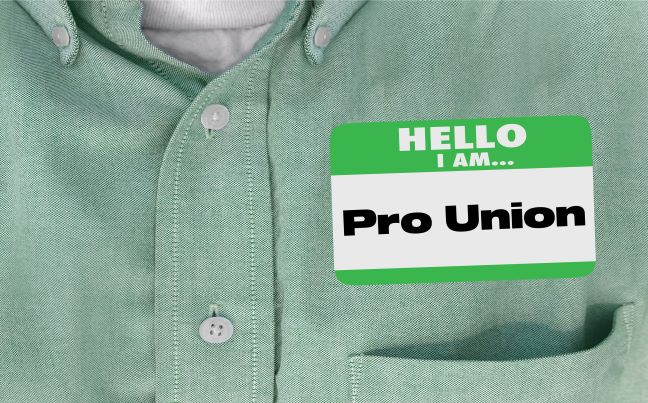A recent decision from the National Labor Relations Board (NLRB) is seen as making it more difficult for employers to prohibit employees from wearing union insignia or apparel.
On August 29, the NLRB issued a decision in Tesla, Inc., in which the Board overruled a decision that gave employers more leeway in preventing employees from wearing union apparel and insignia. The new decision returns to an old standard holding that employer policies that restrict the display of union emblems are presumptively unlawful, absent special circumstances justifying the restriction.
Robert A. Kaiser, a partner with Armstrong Teasdale LLP in St. Louis, Missouri, says the question comes down to determining under what circumstances an employer may restrict clothing bearing a union insignia or message when the clothing isn’t part of the employer’s “uniform” and what burden the employer must meet to keep from violating employees’ free-speech rights.
The NLRB majority found that electric vehicle manufacturer Tesla’s policy restricting employees from wearing union insignia wasn’t justified. In making that decision, the Board returned to a rule that says employer policies that restrict that kind of union activity or association “are presumptively invalid, in the absence of special circumstances which make them necessary in order to maintain production and discipline,” Kaiser says.
The NLRB’s decision “should not be read too broadly,” says Kaiser, explaining the decision doesn’t question facially neutral dress codes that don’t restrict or limit employees’ right to display union insignia.
Also, employers may continue to maintain facially neutral, nondiscriminatory dress codes and uniform policies that serve a legitimate interest, such as safety, if those circumstances outweigh the adverse effect on employees’ rights under Section 7 of the National Labor Relations Act (NLRA).
“Rules like these never operate in a vacuum, and as is often the case, an argument over ‘burden of proof’ depends on what the actual facts on the ground look like,” Kaiser says. “In the end, the real question will focus on the strength of the employer’s rationale for a ban on union insignia on a uniform.”
Kaiser says in the Tesla case, the company’s explanation for prohibiting union insignia and apparel—safety—“didn’t seem to hold up to scrutiny.” Tesla’s policy was enforced during a union campaign and only for one of its locations.
“Employers, particularly in a manufacturing setting, need to make sure that the reason for a strict uniform policy is, in fact, neutral and that they can articulate a concrete reason for not allowing what may be seen as ‘harmless’ deviations from the policy to allow for union insignia,” Kaiser says.
Tammy Binford writes and edits news alerts and newsletter articles on labor and employment law topics for BLR web and print publications.

